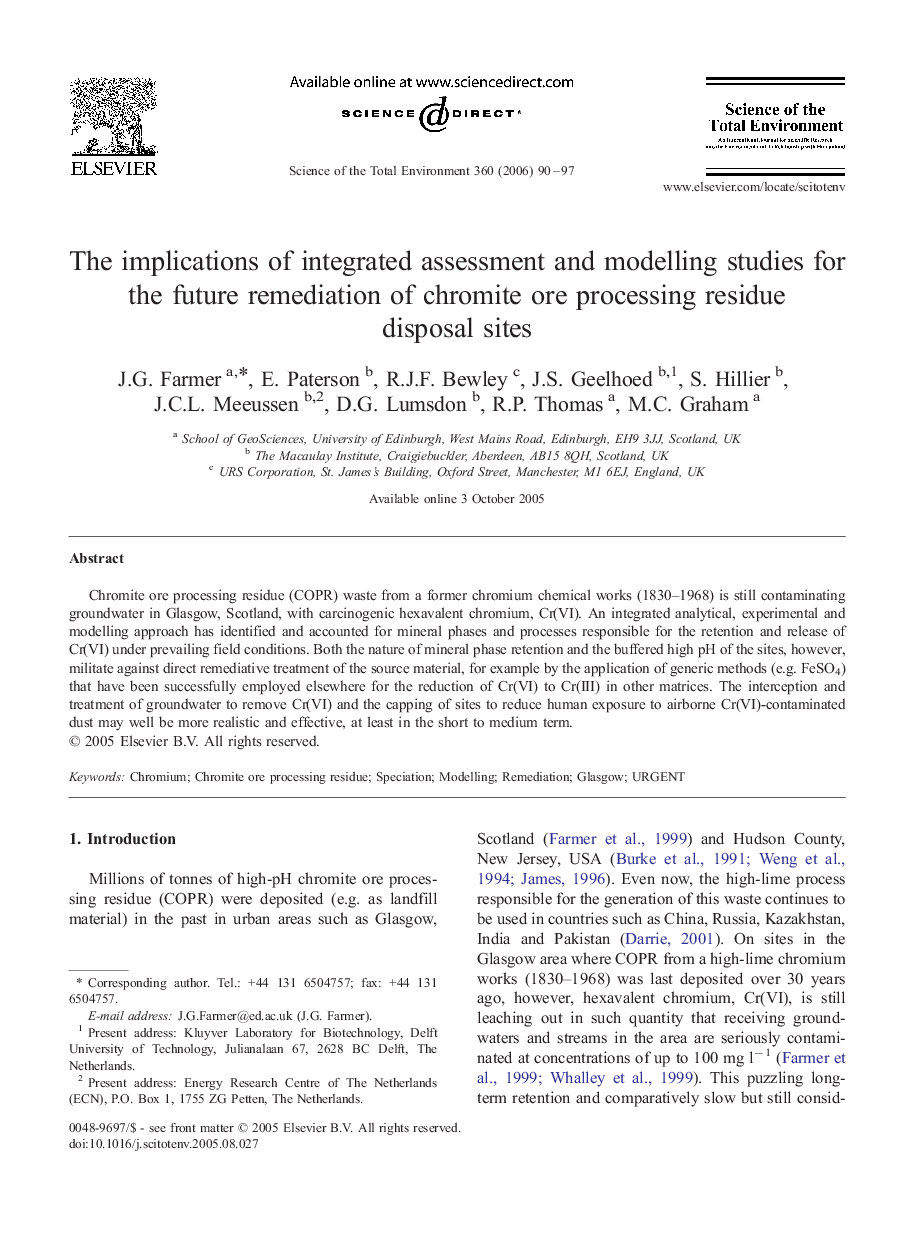| Article ID | Journal | Published Year | Pages | File Type |
|---|---|---|---|---|
| 4434191 | Science of The Total Environment | 2006 | 8 Pages |
Chromite ore processing residue (COPR) waste from a former chromium chemical works (1830–1968) is still contaminating groundwater in Glasgow, Scotland, with carcinogenic hexavalent chromium, Cr(VI). An integrated analytical, experimental and modelling approach has identified and accounted for mineral phases and processes responsible for the retention and release of Cr(VI) under prevailing field conditions. Both the nature of mineral phase retention and the buffered high pH of the sites, however, militate against direct remediative treatment of the source material, for example by the application of generic methods (e.g. FeSO4) that have been successfully employed elsewhere for the reduction of Cr(VI) to Cr(III) in other matrices. The interception and treatment of groundwater to remove Cr(VI) and the capping of sites to reduce human exposure to airborne Cr(VI)-contaminated dust may well be more realistic and effective, at least in the short to medium term.
